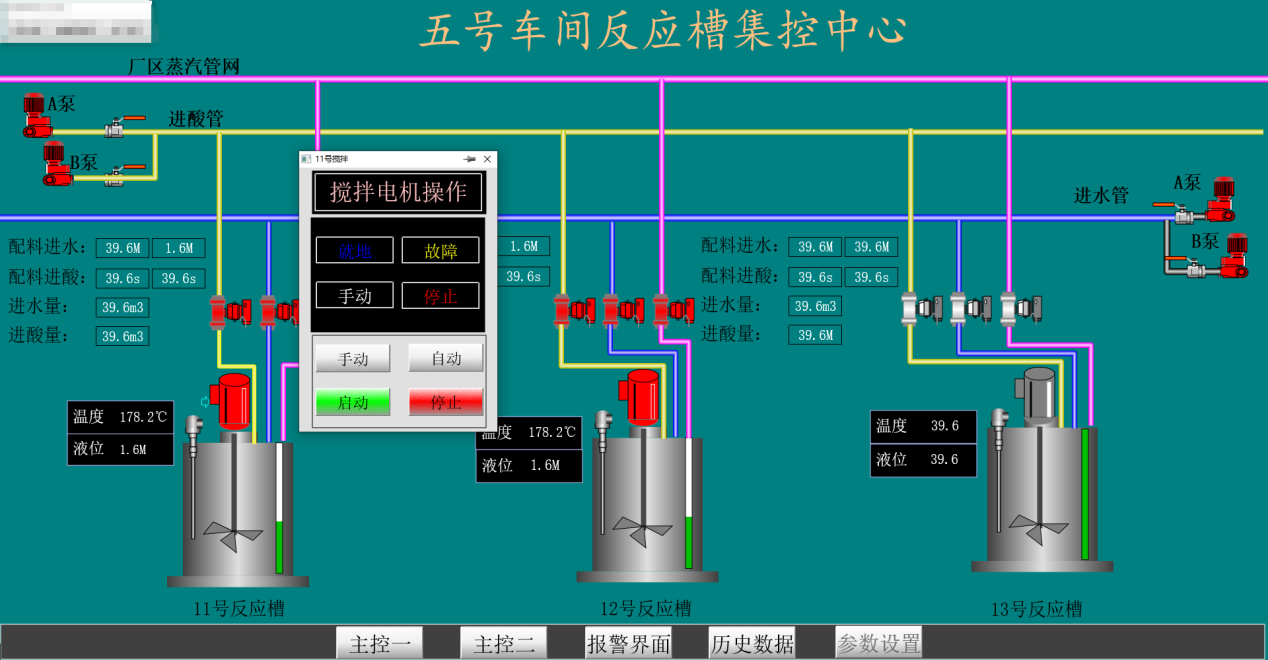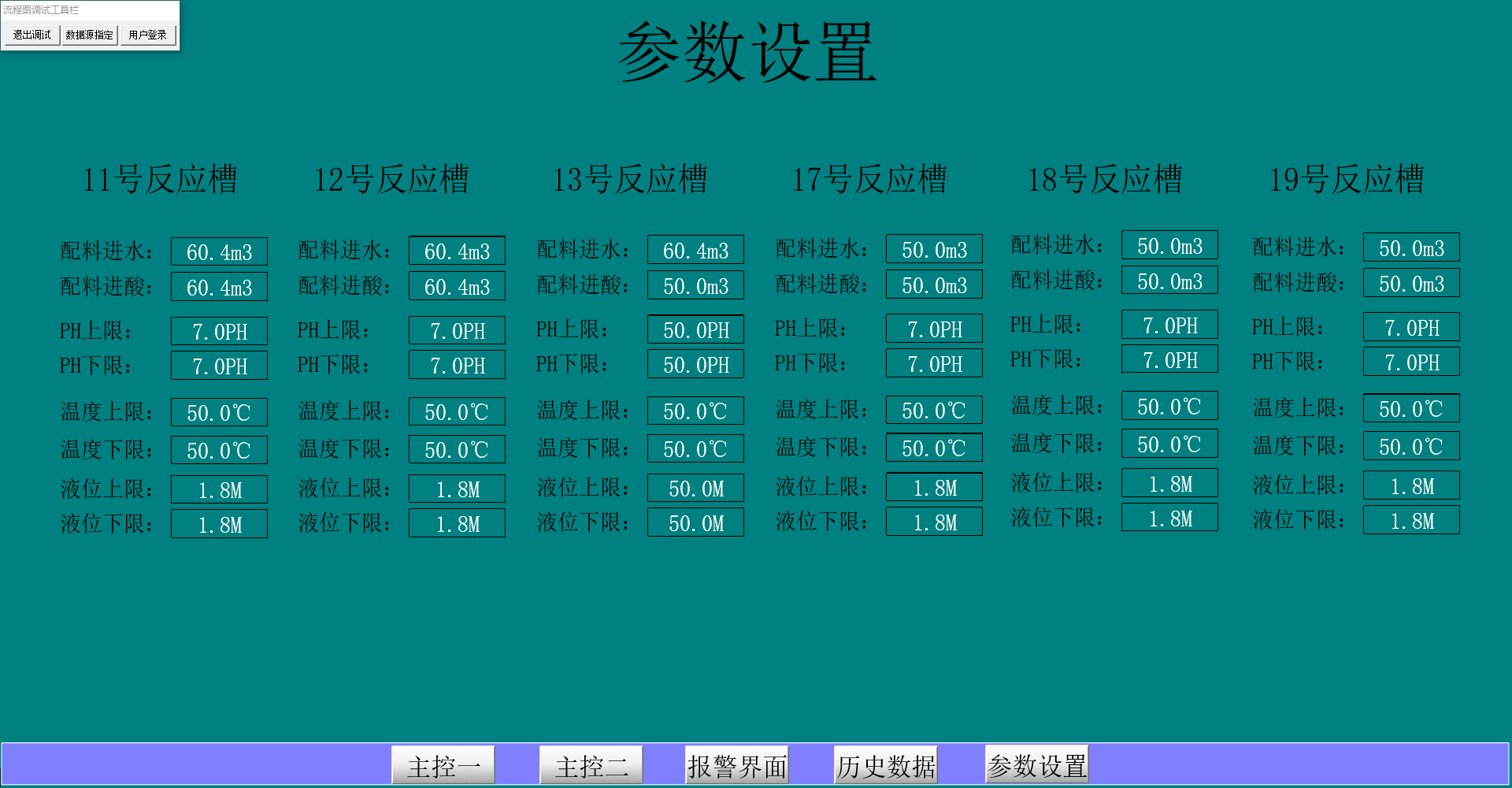
A company specializing in hazardous waste disposal and resource recovery uses drying, sintering, incineration, and hydrometallurgy to achieve waste reduction, harmlessness, and resource utilization. It now employs the InPlant SCADA system for hydrometallurgy process control and real-time data acquisition, supporting process management and analysis.
The hydrometallurgy process includes leaching, washing, and acid preparation. Different concentrations of solvents (sulfuric acid, hydrochloric acid, nitric acid) are configured with water or low-salt wastewater. Leaching controls parameters like feed rate, liquid - solid ratio, reaction time, temperature, initial acidity, and stirring intensity. Washing uses heated water or wastewater to leach copper ions into solution.
The main processes of wet smelting are as follows: acid preparation, leaching and washing.
·Acid preparation: The selected solvents are sulfuric acid, hydrochloric acid, and nitric acid. Use tap water or low-salt wastewater after iron removal and waste nitric acid to prepare solvents of different concentrations in proportion.
·Leaching: The controlled parameters are mainly feed amount, liquid-to-solid ratio, reaction time, reaction temperature, initial acidity (acid preparation stage), and stirring intensity (fixed).
·Washing: Heat tap water or waste water after iron removal , slurry , leach and filter the leached residue through a stirring tank to allow soluble copper ions to enter the aqueous solution.
1.Collect and store process data, and download key control parameters.
2.Provide parameter alarm alerts and historical alarm queries.
3.Display process flowcharts.
4.Use a hot-standby redundant architecture for the data server.
5.Enable data interaction with other platforms.
System Architecture

·SOLISCADA deploys dual redundant data servers to achieve redundant storage of data on reactors, valve pump electromechanical equipment, sensor equipment, etc., ensuring data security and reliability.
·Supports standard PLC drive protocols such as Siemens, Mitsubishi, and AB, and can communicate with other system instruments through protocols such as OPC and MODBUS.
·Deploys engineer stations and operator stations to implement the function of different user roles corresponding to different operation permissions to ensure the safety of on-site operation and maintenance.
Functionalities
·Redundant architecture
SOLISCADA ensures data stability through server redundancy via two deployed data servers.
·Data collection
The underlying control of this case project is mainly Siemens PLC, which interacts with PLC for data collection through the S7 series driver provided by the SCADA software to achieve real-time monitoring and control of data.
·Historical trend records
SOLISCADA keeps a historical record of important operating parameters. It records key operational parameters with adjustable collection cycles (1-30 seconds) and long-term storage (over 10 years).
The specific time of project use depends on the computer configuration.
·Real-time process display
SOLISCADA flow chart has a rich template library. The project uses software pipelines, tanks, pumps, valves and other template controls to simulate on-site process flows.


·Data Interaction
Data exchange with other systems is supported via OPC UA, OPC DA, relational databases, and Modbus TCP slave.
In hydrometallurgy, managing multiple processes with unified, real-time data is crucial. Outdated manual data entry methods are inefficient and lead to poor management.
SOLISCADA revolutionize this by digitizing production records, providing comprehensive operational and reporting data for in-depth analysis. This boosts efficiency, elevates management levels, and drives smarter decision-making, giving businesses a competitive edge in the market.
 Oil & Gas
Oil & Gas Water Industry
Water Industry Food & Pharmaceuticals
Food & Pharmaceuticals Marine
Marine Mining & Metal
Mining & Metal Manufacturing
Manufacturing Electric Utilities
Electric Utilities Municipal Industry
Municipal Industry